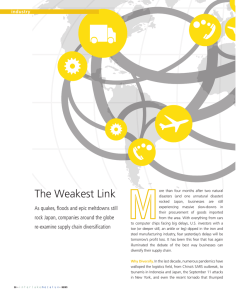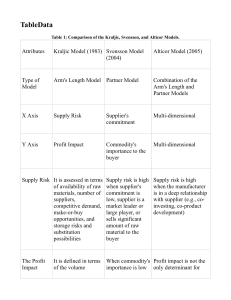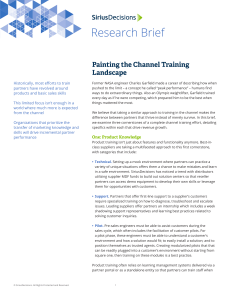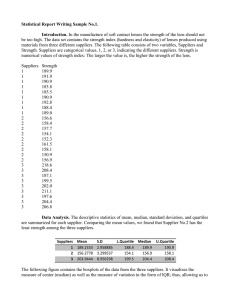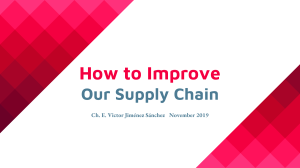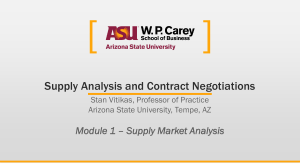Introduction to IS - Faculty Web Server
advertisement
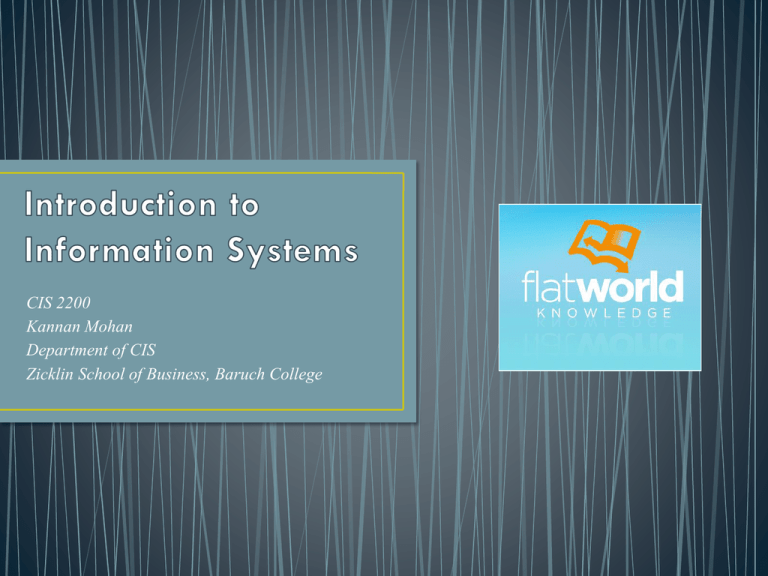
CIS 2200 Kannan Mohan Department of CIS Zicklin School of Business, Baruch College This work is licensed under the Creative Commons Attribution-Noncommercial-Share Alike 3.0 Unported License. To view a copy of this license, visit http://creativecommons.org/licenses/by-nc-sa/3.0/or send a letter to Creative Commons, 171 Second Street, Suite 300, San Francisco, California, 94105, USA • Why are we here? • What has changed because of IT? 1-3 • What is IT? What is IS? • Does IT matter? • If yes, how? • How can organizations use IT to gain competitive advantage? • Why do some IT investments fail while others succeed? 1-4 • Information technology: The hardware and software a business uses to achieve objectives • Information system: Interrelated components that manage information to: • Support decision making and control • Help with analysis, visualization, and product creation 1-5 1-6 Organization Technology Information Systems People 1-7 THE IMPLEMENTATION PROCESS INITIATION BUILD/BUY INTRODUCTION ADAPTATION FIRM STRATEGY THE INFORMATION SYSTEM BUSINESS PROCESSES USE STRUCTURE & CULTURE CONSEQUENCES THE ORGANIZATION IT INFRASTRUCTURE THE EXTERNAL ENVIRONMENT 1-8 Source: (Silver et al, 1995) • Access to computing and telecommunications • Changing the way firms advertise and people communicate • Lowered computing costs • Pervasive impact of technology – across business disciplines 1-9 • Sophisticated, high-powered computing is turning into a utility via: • Cloud computing • Software as a service • New technologies have also: • Fueled globalization • Fueled data-driven decision making • Raised privacy and security concerns 1-10 • Accounting • Finance • Marketing • HR • Operations • Law • Programmers • Experts in user-interface design, process design, and strategy • Consulting and field engineering • Chief information officer • “C-level” specialties in emerging areas • Chief information security officer (CISO) • Chief privacy officer (CPO) 1-12 • Operational excellence • New products, services, and business models • Customer and supplier intimacy • Improved decision making • Competitive advantage • Survival 1-13 • Improved efficiency results in higher profits • Helping improve efficiency and productivity • E.g. Wal-Mart: • Power of combining information systems and best business practices to achieve operational efficiency—and $348 billion in sales in 2007 • Most efficient store in world as result of digital links between suppliers and stores 1-14 • Enabling firms to create new products, services, and business models • Business model: How a company produces, delivers, and sells its products and services • E.g. Music industry • Drastic changes in business models in recent years • Apple: Successful innovations – iPod, iTunes, etc. 1-15 • Customers who are served well become repeat customers who purchase more • Mandarin Oriental hotel • Uses IT to foster an intimate relationship with its customers, keeping track of preferences, etc. • Close relationships with suppliers result in lower costs • JCPenney • IT to enhance relationship with supplier in Hong Kong 1-16 • Managers being swamped with data that is not timely or helpful • Real-time data improves ability of managers to make decisions • Verizon: Web-based digital dashboard to update managers with real-time data on customer complaints, network performance, and line outages 1-17 • Often results from achieving business objectives • Advantages over competitors: • Charging less for superior products, better performance, and better response to suppliers and customers • Toyota: Uses TPS (Toyota Production System) to achieve high levels of efficiency and quality 1-18 • Investment in IS out of necessity • Simply the cost of doing business • Keeping up with competitors - ATMs? • Federal and state regulations and reporting requirements 1-19 • How can IT transform your business? • How has IT impacted the various areas of business? • What are the key business drivers for IS? • What are the dimensions and functions of IS? 1-20

